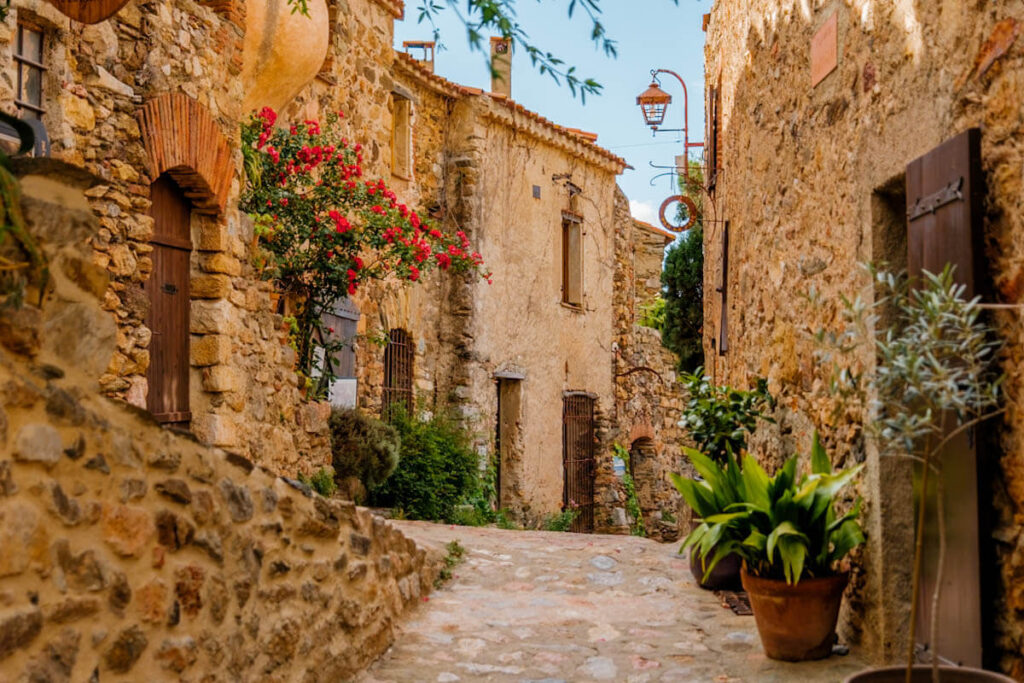In 1982, the association Les Plus Beaux Villages de France (The Most Beautiful Villages of France) was founded in France. The goal of this association is to preserve and protect small, picturesque villages across the country. Additionally, it aims to attract tourists to lesser-known regions of France. Villages that secure a spot on the list are recognized for their cultural, historical and architectural heritage. Today, Les Plus Beaux Villages de France has become a prestigious label for the selected villages. Tourists from around the world visit these villages in search of an authentic and lesser-known French experience.
When is a village added to the list?
To be included on the Les Plus Beaux Villages de France list, a village must meet certain criteria. Only one in five applications is approved, thanks to the strict 27 admission criteria. For example, the village must have no more than 2,000 inhabitants and must possess significant architectural or natural heritage. The selected villages often feature well-preserved historical buildings such as castles, churches, or traditional houses. Additionally, the location can be special, or the village may have a unique cultural atmosphere. There are many other criteria as well.
How many villages are on the Les Plus Beaux Villages de France list?
As of summer 2024, there are more than 176 villages on the Les Plus Beaux Villages de France list. These villages are spread throughout France, making it possible to visit one of the most beautiful villages in almost every region.
Les Plus Beaux Villages de France villages I’ve visited
I’ve had the pleasure of visiting several Les Plus Beaux Villages de France villages myself. Each one has something special and they certainly deserve their place on the list. Some villages stand out, leaving a lasting impression and often coming to mind even after time has passed. In this article, I’ll share the Les Plus Beaux Villages de France villages that I’ve explored.
Gerberoy, Hauts-de-France
Gerberoy is considered by many to be one of the most beautiful places in northern France. It’s a village with a rich and turbulent history, one that wasn’t always rosy. During the Hundred Years’ War, Gerberoy was on the frontline between the French and the English. The village endured numerous sieges, pillages and destructions. After this period, Gerberoy faded into obscurity until a famous painter revived the village in the 20th century.
Gerberoy isn’t large, but you can easily spend a few hours wandering its charming streets. The cobbled lanes and alleyways are incredibly quaint, with the colorful houses’ walls covered in roses and climbing plants. During the right season, it’s a highly photogenic spot that’s perfect for a visit on your way to or from your vacation in France. If you’re drawn to the houses in Gerberoy, you’ll also love Parfondeval (also in the Hauts-de-France region). Both villages share similar architectural styles.
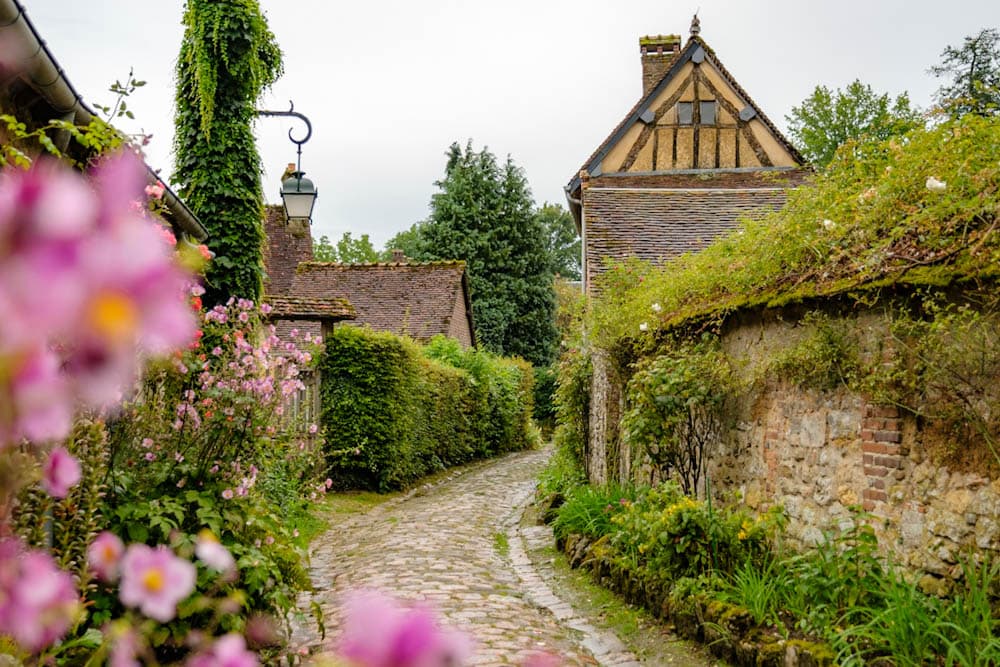
Moustiers-Sainte-Marie, Alpes-de-Haute-Provence
Moustiers-Sainte-Marie is a charming village in the Alpes-de-Haute-Provence department in southern France. Nestled at the foot of a limestone cliff, Moustiers-Sainte-Marie is known for its beauty, rich history and traditional crafts.
One of the most striking features of Moustiers-Sainte-Marie is its location at the entrance of the Gorges du Verdon, a breathtaking canyon often referred to as the Grand Canyon of Europe. The surrounding landscape offers spectacular views with steep cliffs, turquoise rivers and lush green valleys. This area is truly a paradise for nature lovers and outdoor enthusiasts.
Moustiers-Sainte-Marie itself is a labyrinth of cobbled streets, medieval houses and charming squares. The village is dominated by the Église Notre-Dame de l’Assomption, a Romanesque church dating back to the 12th century. In the center, you’ll also find an ancient aqueduct, Chapelle Ste Anne (8th century), several fountains and old city walls. A walk through the streets of Moustiers-Sainte-Marie is a delight in itself. In addition to the aforementioned sights, the village boasts flower-adorned façades and traditional shops.
For centuries, Moustiers-Sainte-Marie has been an important center for pottery production. The village is still home to several shops where local artisans sell their handmade ceramics. The restaurants in Moustiers-Sainte-Marie feature cozy terraces and serve local Provençal dishes.
Perched high on a cliff, the Chapelle Notre-Dame-de-Beauvoir overlooks the village. This chapel, built in the 12th century on the foundation of a 5th-century temple, is accessible by climbing 262 stone steps.
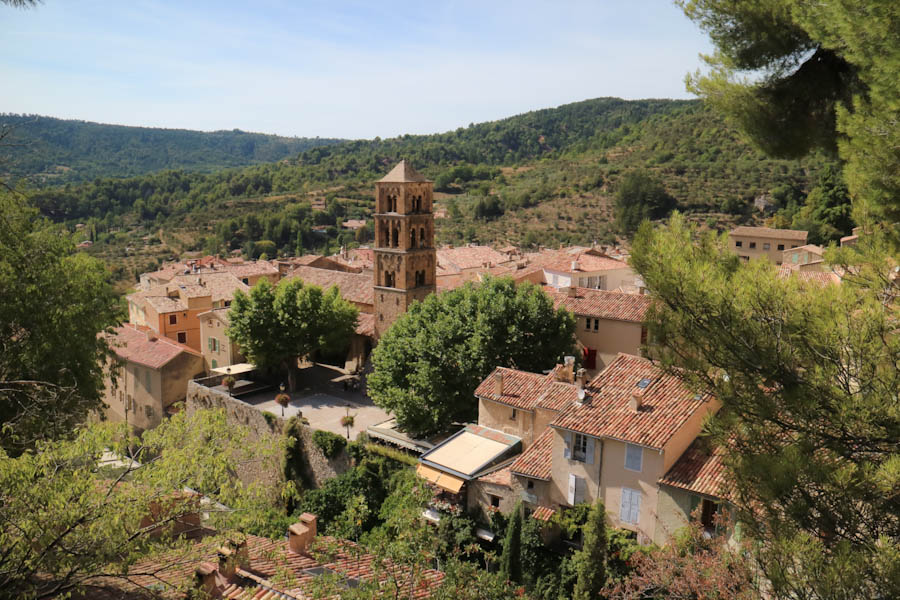
Gordes, Vaucluse
The beautiful village of Gordes is located in Vaucluse, in the south of France. Perched atop a hill, it attracts many tourists each year with its picturesque charm, local architecture and stunning views. The village is known for its stone houses that are tightly packed together, creating narrow streets and alleyways.
One of the most prominent sights in Gordes is the Château de Gordes, which towers above the village. Dating back to the 11th century, the castle offers panoramic views of the surrounding valley and the Luberon countryside. Inside the castle, you’ll find the Musée du Château de Gordes (Pol Mara Museum), which houses a collection of contemporary artworks. The village also boasts several medieval spots worth exploring. These include a traditional washhouse, a medieval gateway, cellars where craftsmen once worked and an ancient water fountain.
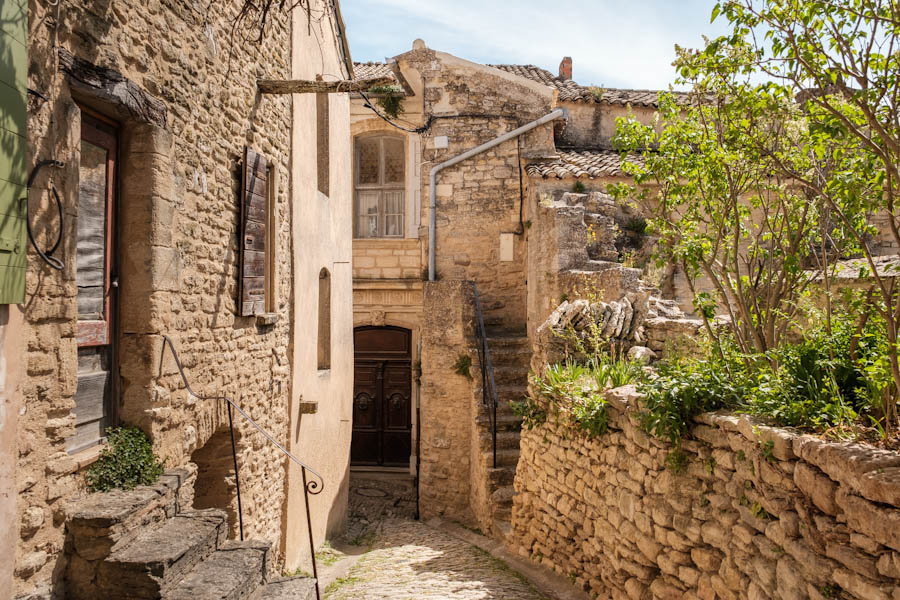
Roussillon, Vaucluse
The red-colored Roussillon is a unique village in the Vaucluse department in the south of France. It is known for its striking ochre-colored cliffs and colorful landscape. The distinctive colors of Roussillon are due to the abundance of ochre in the region. Ochre is a natural dye extracted from clay, rich in various shades of yellow, orange and red. The ochre mines of Roussillon were once a significant source of income for the village.
Roussillon itself features narrow cobbled streets, old stone houses with colorful shutters and a vibrant arts community. There are plenty of galleries, workshops and craft shops where visitors can explore local art and crafts. Since everything in Roussillon is built with local stone, the entire village is bathed in red, pink and orange hues. Roussillon also boasts several historical landmarks, such as the Gothic church Église Saint-Michel and the town hall Mairie de Roussillon.
One of the highlights of visiting Roussillon is Sentier des Ocres, also known as the ochre path. This walking trail runs through the ochre mines, offering spectacular views of and over the red-colored cliffs. It is the perfect spot for nature lovers, photographers and hikers. The landscape here is reminiscent of various parks in the United States, such as Bryce Canyon.
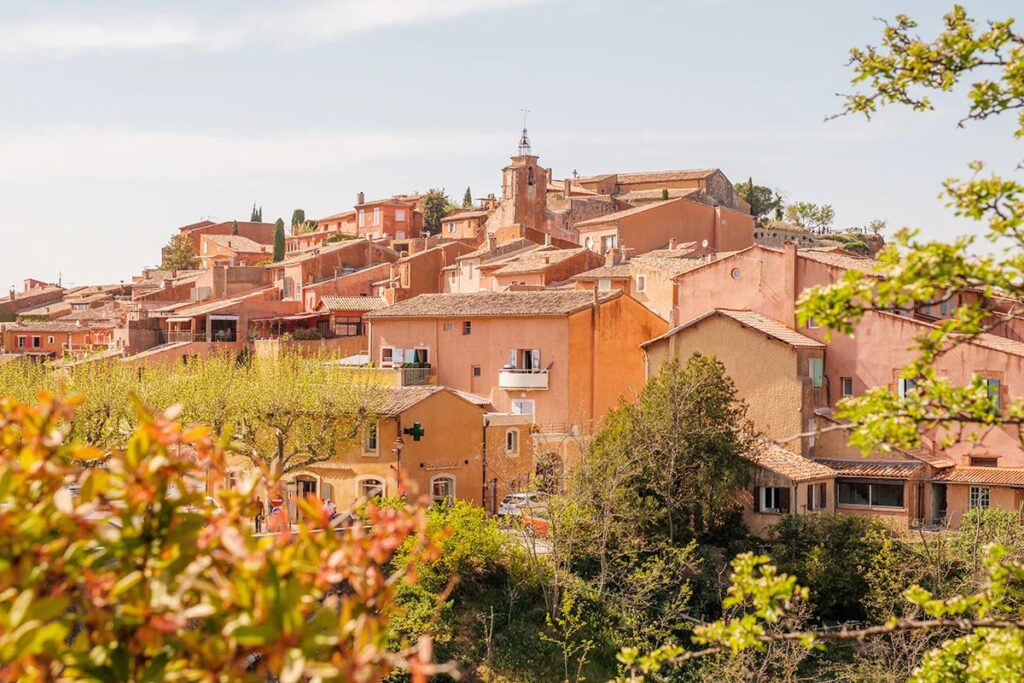
Ménerbes, Vaucluse
Ménerbes is the third Les Plus Beaux Villages de France village in Vaucluse that I visit. The village has a special location on a long ridge. Ménerbes is especially known for its association with British author Peter Mayle, whose book A Year in Provence is set in and around Ménerbes. The book gained worldwide attention and brought many visitors to Ménerbes.
Famous sights in Ménerbes include the Gothic church Église Saint-Luc, the Tour de l’Horloge (clock tower), Porte Saint Sauveur (medieval gateway), the Maison de la Truffe et du Vin (truffle and wine museum), Abbaye St-Hilaire(13th-century Carmelite monastery) and the Musée du Tire-bouchon (corkscrew museum).
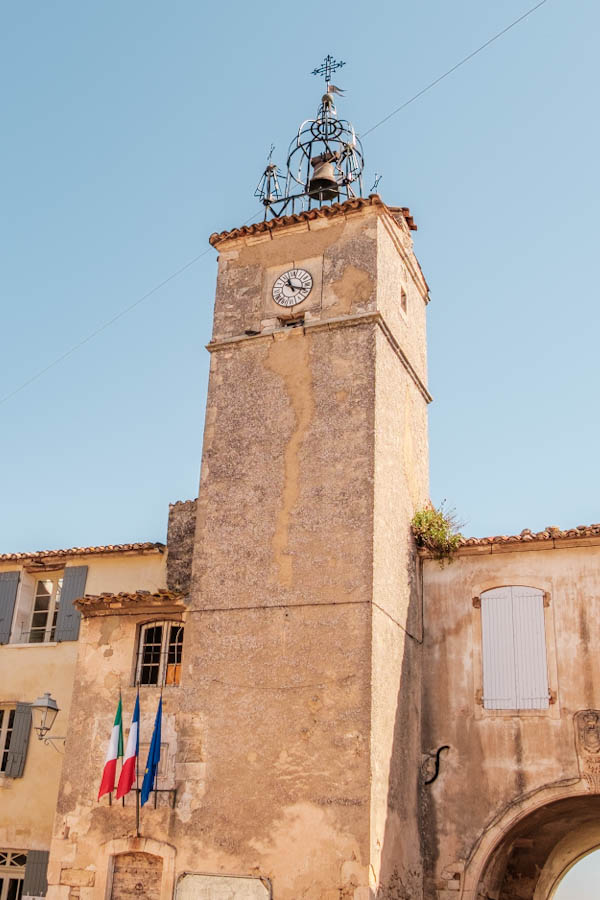
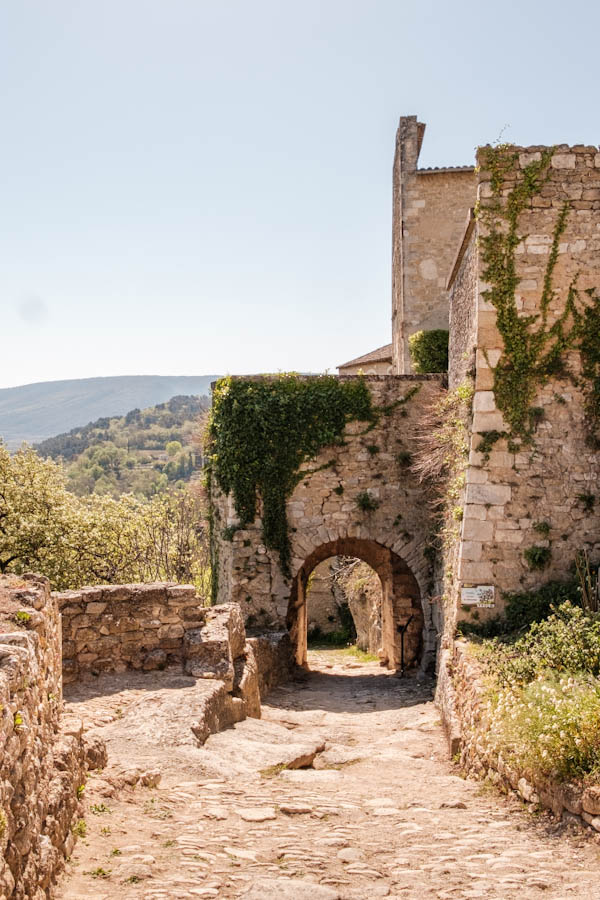
Lourmarin, Vaucluse
The last Les Plus Beaux Villages de France village I visited in Vaucluse is Lourmarin. Lourmarin is picturesque with many cobbled streets, old houses and a unique Provençal atmosphere. You will find cozy cafés, restaurants and boutiques. There is a weekly market where you can buy local products and there are also several art galleries displaying the work of local artists. Every corner and street in Lourmarin is delightful!!
Sights in Lourmarin include Château de Lourmarin (15th-century castle), Fontaine de la Place (17th-century fountain), La Fontaine Couverte (public washhouse), Eglise Saint-André et Saint-Trophime (12th-century church), Fontaine aux Trois Masques (1930s fountain) and Le Beffroi (17th-century belfry).
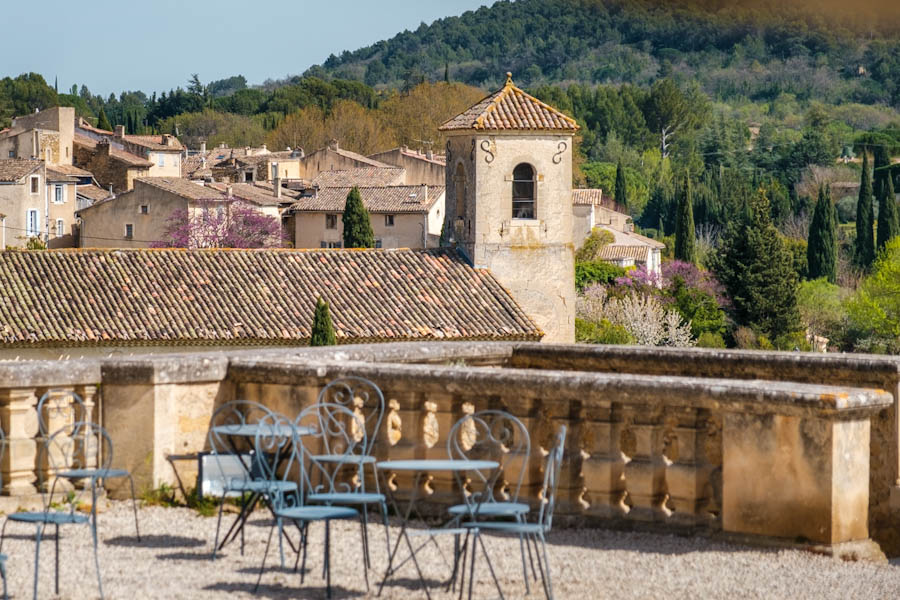
Saint-Quirin, Moselle (Grand Est)
In the Moselle department in the northeastern part of France lies the hidden gem Saint-Quirin. The village, located in the heart of the Vosges, is known for its beautiful setting, rich history and cultural heritage. The village dates back to ancient times and has witnessed various civilizations and conflicts throughout the centuries. There are several sights in Saint-Quirin, including the Saint Quirinus church, the small Chapelle-Haute chapel and the archaeological site Croix Guillaume.
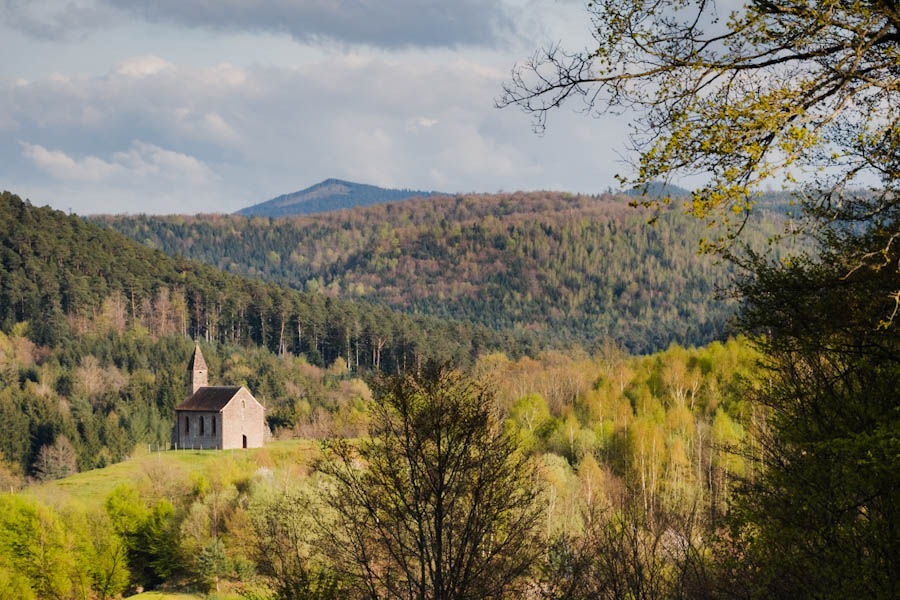
Riquewihr, Haut-Rhin (Alsace)
The most famous wine village in Alsace is perhaps Riquewihr. Nestled at the foot of the Vosges mountains, it is surrounded by vast vineyards, which undoubtedly adds to the village’s appeal. In Riquewihr, you’ll find beautifully preserved half-timbered houses, painted in various colors.
Dating back to the 11th century, Riquewihr has a rich history. During the Middle Ages, it was an important trading center along the Alsace wine route. The narrow, cobblestone streets, with colorful half-timbered houses and flower-covered facades, make you feel as though you’ve stepped back in time.
One of the striking sights in Riquewihr is the fortified 13th-century gateway, which served as one of the village’s main entry points. A portion of the town wall is still intact. Additionally, Riquewihr is home to many restaurants, shops, wineries and tasting rooms where you can enjoy famous Alsace wines. Riquewihr attracts tourists year-round, but it can get particularly crowded during the summer months. Want to enjoy a more relaxed atmosphere? Take a stroll down the side streets, where it’s much quieter!
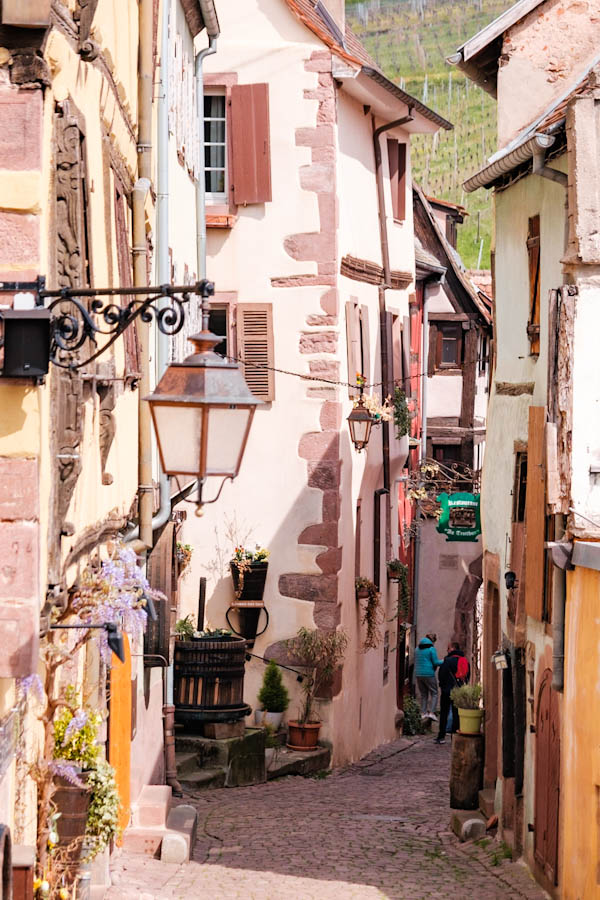
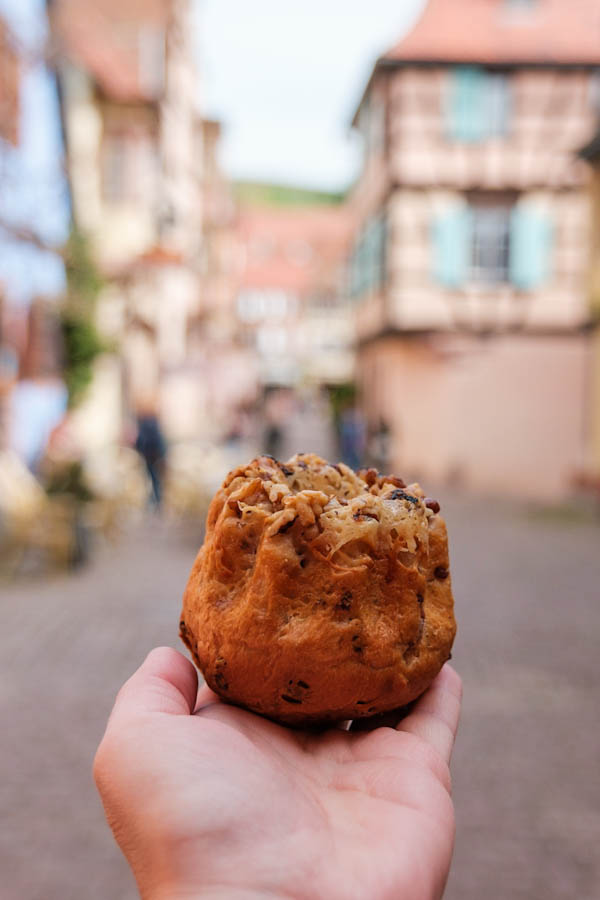
Hunawihr, Haut-Rhin (Alsace)
Hunawihr is a very small village in Alsace, situated in the famous wine region of Alsace, just like Riquewihr and Eguisheim and surrounded by vast vineyards and picturesque landscapes. Hunawihr is known for its traditional Alsace architecture. Moreover, the village manages to maintain its charming atmosphere, as it is visited much less frequently than the wine villages of Riquewihr, Ribeauville, Eguisheim and Bergheim.
The most prominent sight in Hunawihr is the Église mixte Saint-Jacques-le-Majeur de Hunawihr, a beautiful Gothic church from the 15th century located atop a hill. The church boasts a lovely interior with fine wood carvings and stunning stained-glass windows. In the village, you’ll also find Fontaine Sainte Hune, a 14th-century fountain. Another attraction in Hunawihr is NaturOparC, which runs a protection and breeding program for storks. If you’re looking to escape the crowds of the other wine villages, Hunawihr is the perfect place to visit.

Eguisheim, Haut-Rhin (Alsace)
Eguisheim is also located in Alsace, close to Hunawihr and Riquewihr. Eguisheim is famous for its unique architecture, with colorful half-timbered houses and narrow cobblestone streets. Walking through the streets, you can experience the charm of the medieval period. There’s plenty to see in Eguisheim: beautiful half-timbered houses with flower-covered facades, squares with elegant fountains and narrow cobbled streets.
Château de Saint-Léon-Pfalz is the centerpiece of Eguisheim, with houses and streets built around it. Next to the château, you’ll find Place du Château, with the lovely Fontaine de Saint-Léon. Around this square, there are authentic restaurants with cozy terraces where you can enjoy typical Alsace dishes. As you walk through the streets around the square and château, you’ll encounter various sights, including distinctive half-timbered houses, alleys and more fountains. Like in the other wine villages, Eguisheim is also a great place to taste wine. And that’s definitely something you should do in Alsace… perhaps in every village!
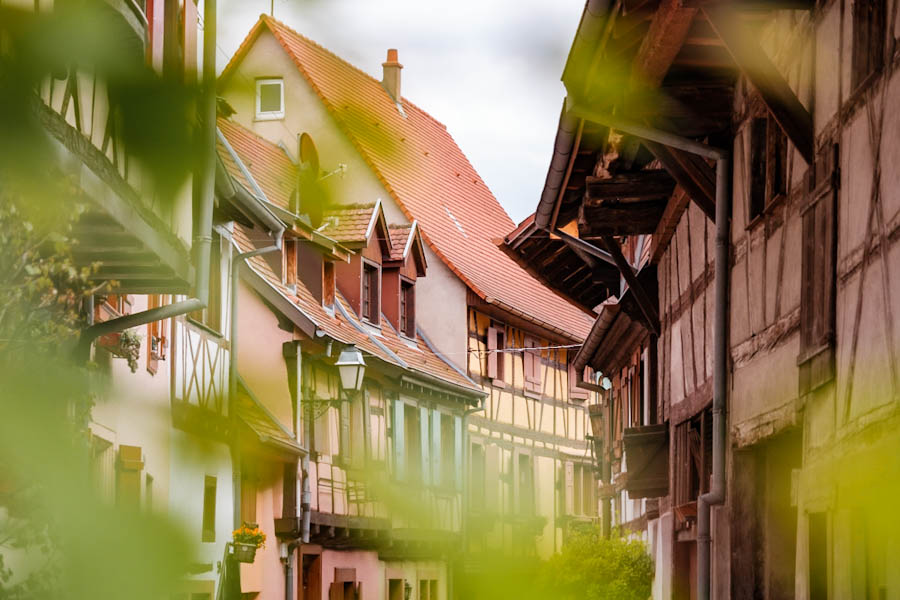
Castelnou (Pyrénées-Orientales)
In the Pyrénées-Orientales department, about twenty kilometers northwest of Perpignan, you’ll find the beautiful Castelnou. The village looks like something out of a fairytale, nestled between surrounding hills with the 2784-meter-high Canigou in the background. The history here dates back to the 10th century and it feels as though time has stood still. Cobblestone streets, ancient houses, crooked stairs and stunning views; Castelnou is truly picturesque!
The most famous sights include the Château de Castelnou, the 13th-century Église Santa-Maria del Mercadal and of course, all the medieval streets. In the summer, it can be quite busy, but in the off-season (early June), I was nearly alone as I wandered through the streets. If you’re in the area, don’t miss the beautiful Orgues d’Ille-sur-Têt!
